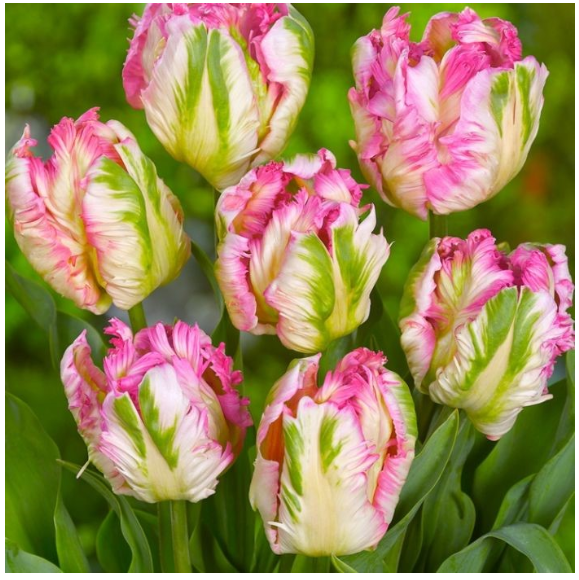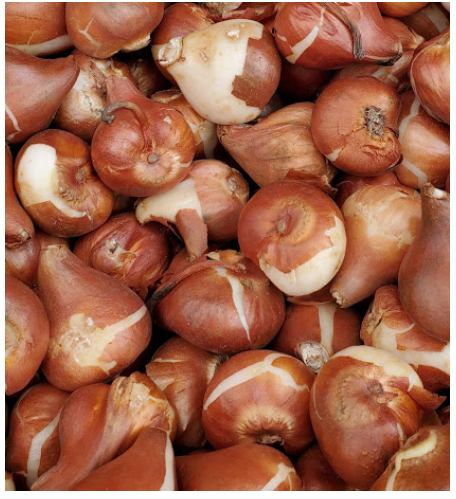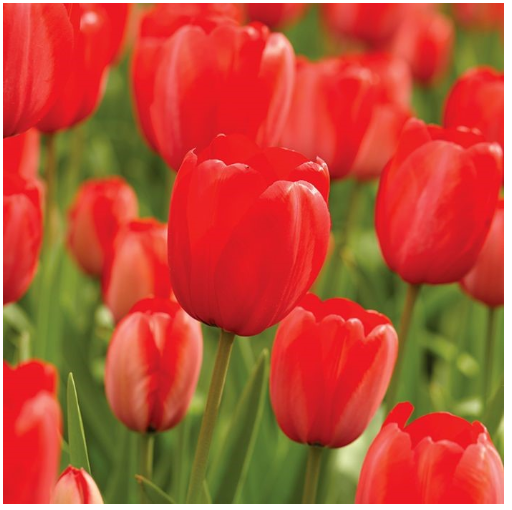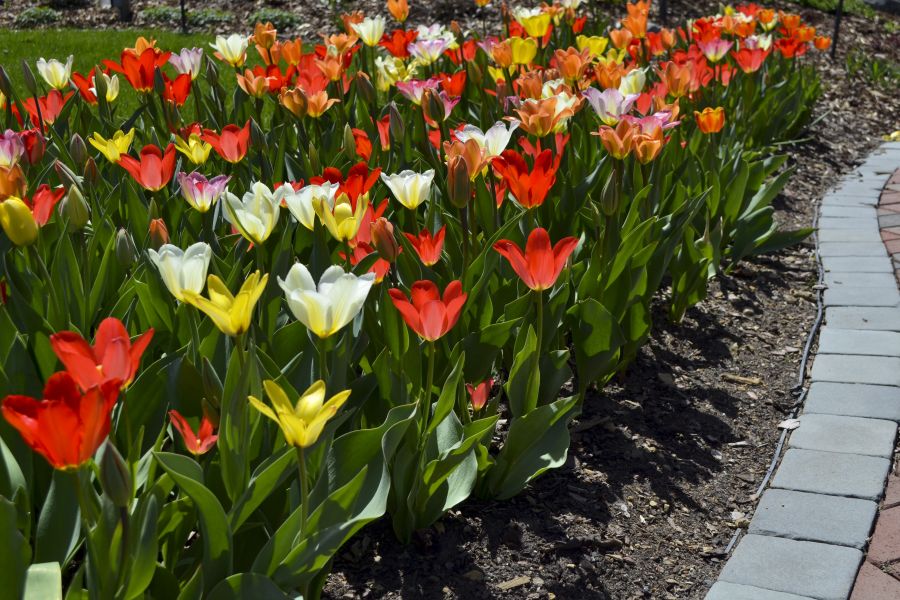Tulips are by far the most popular blooming bulbs. Planted in the fall, the result in the spring is a profusion of colorful blooms to help wash away memories of a long, drab, gray winter. Tulips are easy to grow, making them popular with virtually everyone. There are early, mid and late blooming varieties of tulips. Remember to think of this when you are planting to have continuous color throughout the spring.
Tulips come in a great variety of bright colors – white, yellow, pink, red, black, purple, orange, bi-colors, and more. They are native to Central Asia and Turkey, however today almost all tulip bulbs come from the Netherlands and are exported all over the world.

Tulip ‘Pink Vision’
Selecting Bulbs
- Generally, the biggest is the best.
- Quality bulbs should be heavy and large for their size.
- If the bulb has a few nicks in it, that’s fine, just part of the harvesting process.
- Avoid bulbs with large deep cuts or bulbs that are showing signs of rot, especially near the base.
- Blue mold is a sign that the bulbs have been wet at some point, but it’s not a critical unless it is associated with a soft to the touch feel.
- Gertens only buys #1 grade, quality bulbs.

Healthy bulbs
Soil Type
- Flower bulbs thrive in well-drained soil.
- Adding compost/peat moss will increase drainage and boost bloom size.
- Adding bone meal or Dutch bulb food will produce stronger, more colorful flowers.
How to Plant
- There are several methods to plant your bulbs: power-drilling the holes, trenching, using a bulb planter, or using a small shovel (troll) to dig out a shallow hole.
- Dig a hole from 4” to 6” deep.
- In heavier soils, plant an inch or two shallower than indicated.
- Loosen the soil with organic matter, such as peat moss
- Add a good bulb fertilizer will ensure success.
- Create a formal garden or you can naturalize.
- An ideal place for a bulb garden is in your existing annual beds.
- Small bulbs should be planted 2" apart and larger bulbs should be planted 5" apart.
- After the bulbs are planted, water the soil well once.
- Cover with an inch of mulch to help insulate the bulbs from our cold Minnesota winters.
Tools for planting
- Trowel, bulb digger, bulb auger
- Gloves
- Bone Meal, Dutch Bulb Food
- Peat moss, compost
- Chicken wire (if needed)
- Gertens Quality Bulbs
After Planting
- Once planted, bulbs need four to six weeks to properly set root.
- Giving them a little bulb food will ensure brighter and richer colors in the spring.
- Water thoroughly, about one inch per week until the ground is frozen.
- Mulching your bulbs with dry leaves, straw or wood mulch is also beneficial, but wait until after the first frost. Mulching after the first frost also helps prevent soil temperature fluctuation.

Tulip ‘Red Impression’
Squirrels/Deer
- The best way to protect them is to put a layer of chicken wire between the covered ground and your 1" mulch layer. Make sure to pin the wire down. The mulch will help disguise the wire.
- There are also a number of repellents on the market for deer and squirrels.
Container Growing
- Your pot should be at least 10 inches deep and 17 inches across.
- Use any style of pot including terra cotta, plastic, wooden, etc.
- The container must have drain holes.
- In Minnesota, your pot will have to live in an insulated garage wrapped in burlap or foam and you will have to water during the winter.
- Planting depth is the same as in the ground.
The Gerten Experts are always available to answer your questions!

